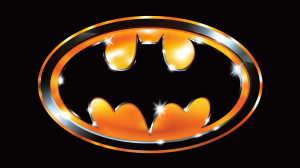The newest volume of Wolverine brings Logan way out of his comfort zone. The first few pages of Wolverine #1, written by Benjamin Percy and drawn by Adam Kubert, are a master class in touching on just about every recurring trope seen in a Wolverine comic over the last 38 or so years. The comic opens with Wolverine laying in the snow, his face ripped away down to his Adamantium skull. He’s lost his memories (again). He’s killed his friends and loved ones (again). He even takes a moment to gently touch the dead body of Jean Grey, whose dress is in just enough tatters to showcase her ample cleavage. Also, he still has a job to do, and by god he’s going to do it. It’s a boring start, one that’s a waste of Adam Kubert’s immense talent and the readers’ time.
Videos by ComicBook.com
Luckily, the comic quickly moves from that “Greatest Hits” sequence to a much more interesting tale, one that features Wolverine and X-Force investigating counterfeit Krakoan pollen being sold on the black market. It’s a weird tale, filled with mutant-worshipping cultists, a long-haired, Hawaiian shirt-wearing detective with a big scar on his noggin that screams “I had a bad encounter with a mutant, once” and a strange entity known as the Pale Girl that seems to be manipulating Wolverine and the pollen-pushing drug handlers. However, Wolverine works best when he’s out of his element and, even though he’s going through the paces, Wolverine is presented as being clearly out of his depth here.
Kubert’s art is fantastic as always, although his layouts can be a bit weird at times. Some of the pages are incredibly crowded with panels, and not all of the unconventional panel layouts work. There’s a three page sequence featuring Wolverine and some Russian gangsters that’s particularly rough, with panels overlapping like photos on top of each other for no clear reason. It seems out of place with the more traditional comics pages that precede them and come after, and I found myself wondering why the scene was laid out in such a fashion.
While this opening tale features a lot of Wolverine grimacing and squinting, it also hints that Wolverine is feeling a bit out of his element. Krakoa has changed him from someone who is the best at stabbing people with his claws to someone who is the best at stabbing people with his claws, but also playing hide and seek with children. He’s gotten soft on Krakoa, even if the comic doesn’t quite come out and say it. Sure, he can still intimidate the occasional crazed cultist or Russian mobster, but he’s still not used to this brave new Dawn of X world.
The second half of Wolverine #1, once again written by Percy and illustrated by Viktor Bogdanovic, does a little bit better job of illustrating Wolverine’s uncomfortable-ness with the mutant paradigm shift. In this tale, Wolverine is sent to Paris after his old foe Omega Red stumbles onto Krakoa and learns that the vampires are looking to take advantage of the chaos left in the wake of Krakoa’s rise. While not quite as pretty as the first tale, the vampire story shows Wolverine struggling as he’s out of his element and cleaning up yet another mess left by his fellow mutants shifting the worldwide paradigm. Although many X-Men fans will likely have flashbacks to their last horrific encounter with vampires, this is a much better story, even if it insists on referring to the vampire collective as “Vampire Nation.”
All in all, the opening issue of Wolverine is a case study of a man who no longer recognizes the world he lives in. His old foes are now reluctant friends, he’s being sent to chase down rogue pollen producers, and he can’t even flirt with a French vampire hunter without getting beat up on by bourgeois vampires in the catacombs. As long as this new Wolverine series keeps showing Wolverine’s struggles to fit in the Dawn of X world, then it might prove to be more interesting than other solo Wolverine outings.
Published by Marvel Comics
On February 19, 2020
Written by Benjamin Percy
Art by Adam Kubert and Viktor Bogdanovic
Colors by Frank Martin
Letters by Cory Petit
Cover by Adam Kubert and Frank Martin








